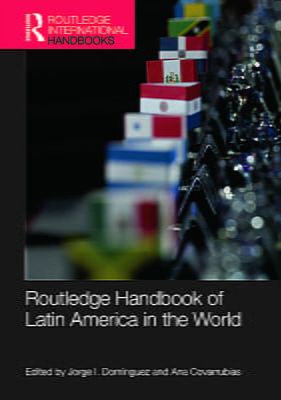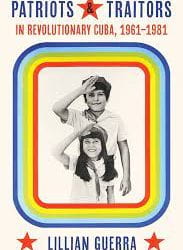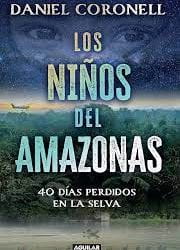A Review of Routledge Handbook of Latin America and the World
By Michael Shifter

utledge Handbook of Latin America and the World Edited by Jorge Domínguez and Ana Covarrubias Routledge: Taylor and Francis Group, 2014, 482 pages
On December 17, 2014, after U.S. President Barack Obama and Cuban President Raúl Castro simultaneously announced the decision to move towards normalizing bilateral relations—after more than half a century of estrangement—there was little backlash. Cubans cheered, and even in Miami’s traditionally hardline Cuban American community, criticism was muted. A counterproductive policy, linked to the Cold War and frozen in time, had at last been adapted to the 21st century.
That development, which secured Obama’s legacy in Latin America and took away virtually the only U.S. policy stand unifying the entire region against it, came too late to be included in this excellent and impressively wide-ranging volume co-edited by Jorge Domínguez of Harvard University and Anna Covarrubias of El Colegio de Mexico. The book systematically reviews the dramatic changes that have taken place since the Cold War to the present, not only in inter-American affairs but especially in Latin America’s global relations. Until now, U.S.-Cuba policy had been an outlier, notably out of sync with most of Washington’s other approaches towards the region.
Domínguez and Covarrubias have assembled a diverse and first-rate group of analysts and scholars to illuminate in particular the processes that have rendered Latin America’s relationship with the rest of the world barely recognizable from the 1980s. The volume is soundly conceived, conceptually coherent and well-organized.
It begins with a fine overview chapter by Abraham Lowenthal and Hannah Baron highlighting the region’s transformations, followed by sections focused on varied theoretical approaches, examinations of five Latin American countries’ foreign policies, the role of extra-regional actors, the progress—and limits—of integration and multilateral efforts, and thematic studies most germane to Latin America’s international relations. There is a lot to track and digest. Although some overlap and unevenness in quality are inevitable—the sheer scope of the material covered results in some unwieldiness—the chapters are generally of very high caliber. Each makes a distinct and valuable contribution to interpreting an enormously complex and constantly evolving landscape. The chapters make clear that Latin America’s engagement with the world did not begin with the end of the Cold War—in fact, the region’s global links were arguably stronger before that fierce ideological battle emerged—but there is little question that globalization in recent decades has accelerated such a process. In the latter part of the 20th century, the United States was the predominant external actor involved in the region. Vast asymmetries in power defined a complicated and ambivalent relationship, often marked by both cooperation and conflict. Such power differentials naturally gave rise both to a paternalistic attitude in the United States and to suspicions and resentments against the United States in many parts of Latin America. For Washington during that period, anti-communism trumped all other interests. The Cold War years left a lot of baggage that, as a number of the chapters argue, manifests itself to this day. There are signs that the shift in U.S.-Cuba policy has begun to mitigate some of the associated costs.
Several chapters devote attention to what Covarrubias and Domínguez call, in their superb introduction, “the second wave of regionalism (that) took place in the late 1980s and early 1990s.” They aptly characterize the 1990s as the “liberal decade,” when it appeared to many observers that, with the end of the Cold War and the move from authoritarian to democratic rule, Latin America was converging on three fundamental notions: democratic politics, market economics, and productive cooperation with the United States. The heightened promise of multilateralism in the hemisphere (which ultimately proved to be elusive) is amply documented. Chapters on the Organization of American States by Thomas Legler, trade and economic integration by Antoni Estevadordal, Paolo Giordano and Barbara Ramos, and North America by Robert Pastor (to whom the volume is dedicated) provide an analysis of this phase. Today there is a greater measure of realism on these questions. Expectations have been considerably scaled back.
New global forces and pressures—coupled with Al Qaeda attacks on New York and Washington, D.C., on September 11, 2001—helped turn the page on that brief interregnum of unity and hemispheric cooperation and ushered in what Estevadordal, Giordano and Ramos identify as a “third wave of regionalism” starting around 2003. In some respects, the most recent period has been paradoxical. On the one hand, as Natalia Saltalamacchia documents in her chapter, regional groupings have proliferated over the past decade—some, like the Bolivarian Alliance for Latin America (ALBA), with a decidedly anti-U.S. cast, and others, like the Union for South American Nations (UNASUR) and the Community of Latin American and Caribbean Nations (CELAC), following a tradition dating from Simon Bolívar that expresses Latin American solidarity and independence. On the other hand, however, if one carefully examines policy positions, Latin America has arguably never been more variegated and fragmented, as each government pursues its separate national agenda.
This volume helps resolve the apparent contradiction between heightened regionalism and unprecedented disunity. Several chapters, especially one by Arturo Santa-Cruz, emphasize the importance of Latin America’s identity, reflected in a long history of shared history and culture. In this sense, markedly divergent national strategies on a range of issues—from trade to basic notions of governance—are fully compatible with a desire to join together at the regional level, to project and assert greater confidence on the global stage.
In the 2000s, with the United States suffering setbacks in its Iraq misadventure and the economic and financial crises, Latin America had a larger space to pursue a more independent political and economic course. This is particularly true of/in South America, as Mexico and Central American remained profoundly connected to the United States. A confluence of factors account for the region’s opportunity to exercise greater “autonomy,” a construct that runs through the volume and gets detailed treatment in theoretical chapters by Roberto Russell and Juan Gabriel Tokatlian and another by Arlene Tickner. No country exemplifies such a shift in its regional and global profile since 2003 (when Lula became president) as much as Brazil, a story well told in the chapter by Monica Hirst and Maria Regina Soares de Lima. During this period, moreover, the region (with few exceptions) sustained solid growth rates and managed to reduce poverty, even inequality, and expand its middle class.
To be sure, one of the most significant developments in Latin America of the past decade has been the greater presence and deeper engagement of extra-hemispheric actors, most particularly China on the economic front. China’s major economic role in the region is, not surprisingly, mentioned in virtually every chapter in the volume. In a separate chapter, Margaret Myers offers a comprehensive analysis of China’s evolving engagement in Latin America, chiefly through trade, but also financing and, increasingly, investments in infrastructure. Despite its economic slowdown, China remains a formidable economic player in many of the region’s countries, and there is no sign that its strategy will become less aggressive or diminish in coming years. The volume also contains solid chapters on Latin American relations with Europe and another with Japan. Others could have been included on the region’s relations with India and South Korea, which were not discussed in this otherwise complete volume.
Among the book’s many merits is an emphasis on the complex interplay among domestic political factors for foreign policies and global relations. Andrés Malamud’s chapter on presidential decision-making in Latin American foreign policy is particularly instructive. In another chapter, Russell and Tokatlian argue that during the Kirchner era foreign policy was significantly shaped—more so than in other periods—by internal domestic politics. All of the authors understand that to explain foreign policies one has to examine the dynamics of national politics.
As a measure of the volume’s scope, the analysis goes beyond governmental relations and encompasses globalization processes originating in the region, including civil society groups and movements and expanding numbers of multilatinas, Latin American businesses that operate worldwide. In light of the dynamic quality of global interactions today, the book might have even gone a bit deeper, probing the implications of social media and accelerating people-to-people connections. Indeed, the volume demonstrates that the region has offered a great deal to the rest of the world. Kathryn Sikkink argues persuasively that much of the work on human rights that emerged in Latin America has been of immense value and utility to the same cause in other parts of the world. And in another chapter on human rights, Peruvian jurist Diego Garcia-Sayan maintains—somewhat at odds with prevailing assumptions—that despite the relentless attacks against the inter-American system in recent years, the impact of rulings by the Inter-American Court of Human Rights has, on balance, been positive and quite considerable.
Although history shows that Latin America’s global engagement does not necessarily march forward in linear fashion, there is reason to believe that the tendencies witnessed, particularly in recent decades, towards the region’s deeper and more varied relations with the rest of the world, will continue. This is even so for the United States which for all the talk of its declining influence, remains a key player in Latin America. Mark Williams offers useful ideas how it can take better advantage of opportunities to become more productively involved. As Nicola Philips reminds us in her compelling chapter, the volume comes out precisely at a moment when fundamental power shifts are taking place throughout the world and there is tremendous flux and uncertainty.
Prominent Latin Americans have long had key global leadership roles, but perhaps no one more so than Jorge Mario Bergoglio, archbishop of Buenos Aires, who became Pope Francis in 2013. The first Latin American pontiff has already had an enormous impact of an array of questions, including helping to broker the U.S.-Cuba rapprochement. Although the Church gets scant attention in this volume, few doubt that Pope Francis will continue to bring his peculiarly Latin American perspective and sensibilities to global challenges—another eloquent reminder of the region’s rich contributions to the world.
Michael Shifter is president of the Inter-American Dialogue, a policy forum on Western Hemisphere affairs based in Washington D.C. He is also adjunct professor of Latin American politics at Georgetown University’s School of Foreign Service. With Jorge Domínguez, Shifter has co-edited three editions (2003, 2008, and 2013) of Constructing Democratic Governance in Latin America, published by Johns Hopkins University Press.
Related Articles
A Review of Patriots and Traitors in Revolutionary Cuba, 1961-1981
I remember when I first heard Lillian Guerra speak: over fifteen years ago, at Brown University, about her third book, Visions of Power in Cuba: Revolution, Redemption and Resistance (1959-1971).
A Review of Los Niños del Amazonas: 40 Días Perdidos en la Selva
Los niños del Amazonas. 40 días perdidos en la selva is the first true book by Colombian journalist Daniel Coronell, whose long and impressive career speaks for itself: news director of manifold networks; recipient of prestigious recognitions such as Emmys, Peabodys and Simón Bolívar prizes; and arguably the most widely read columnist in Colombia, where he is as much admired as he is feared.
A Review of Channeling Knowledges: Water and Afro-Diasporic Spirits in Latinx and Caribbean Worlds
Water is a powerful tenet of Afro-diasporic religions that troubles academic disciplines and racial categories that define state, military and geographic borders.




